Artist Interviews 2022
Natalia Berglund 
By Laura Siebold
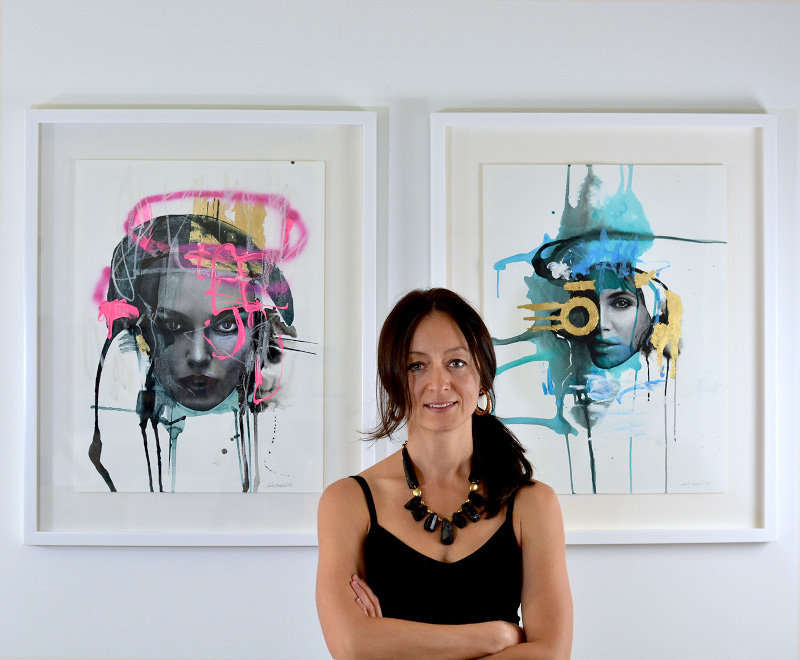
Minsk-born artist Natalia Berglund’s art caught my eye at the fall edition of The Other Art Fair in Los Angeles, CA. The artist focuses on femininity, beauty, mystery, and confidence produces unique and expressive portraits, and sculptures.
In her interview, Natalia speaks about her early Soviet art education, her excitement about the creative interpretations that can be drawn from her work, and ideas of duality and change. Natalia Berglund is a contemporary artist based in Los Angeles, CA.
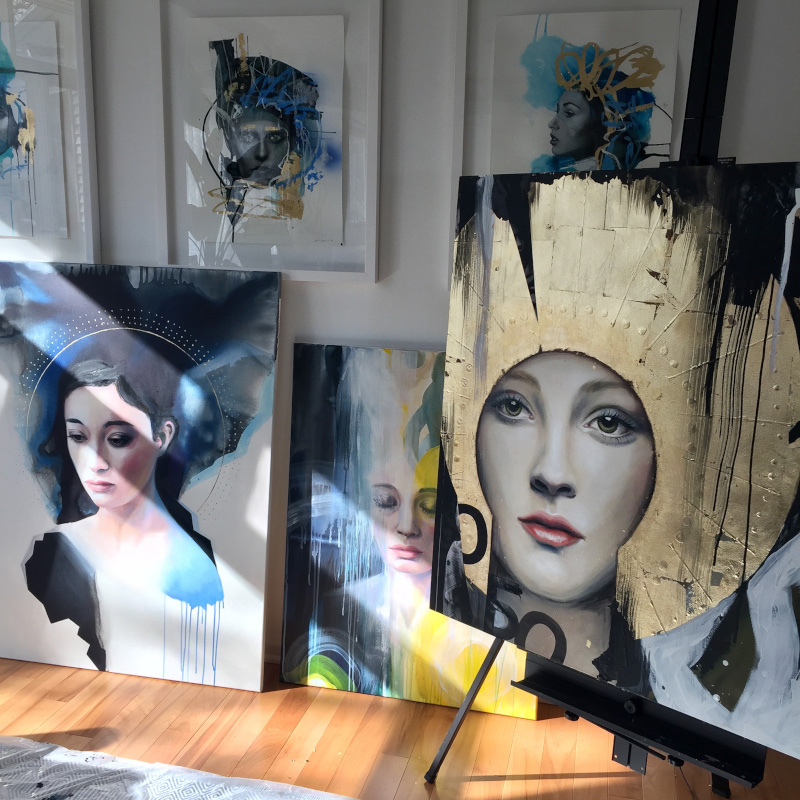
Natalia, you were born in Minsk, Belarus. When did you move to the U.S.? When did you first start creating and how did you develop your unique style? Do you feel that there is a difference in artistic expression between the U.S. and Europe?
I moved to the U.S. 27 years ago, right after finishing high school, or to be more specific – Art Lyceum. In the Soviet System, some career paths were selected very early on. I was enrolled in an art school and was working toward becoming an artist since the age of 7. So, really, I've been creating art most of my life. In college, I shifted my focus to graphic design and worked for several advertising agencies after graduating.
I am not sure if there is a difference in artistic expression between the U.S. and Europe, but I definitely think there is a difference in the approach to the artistic field, especially in the former Soviet countries. Many of us who studied art had to pass entrance exams in order to be accepted [to] a school and placed on the artistic track. I can’t speak for all artists, but I definitely feel my Soviet upbringing and classical art training informed my artistic sensibilities to a certain extent.
It is, however, difficult to say if there is a difference in artistic expression between contemporary U.S. and European artists. In the modern world, trends and sensibilities are becoming cross-cultural and global.
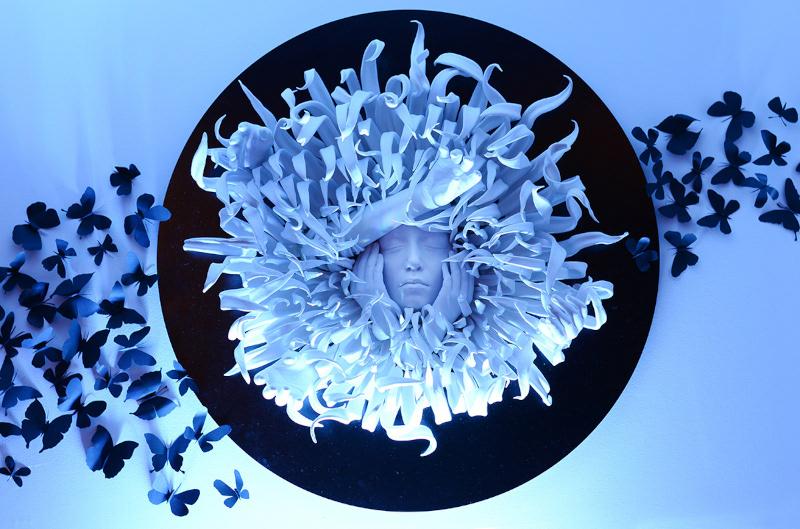
Your sculptures feature a wide range of materials – plaster, different types of clay, paper, wood, and paint. All subjects have their eyes closed. What is the message behind your sculptures? What determines your choice of materials for each project?
The primary material that I use is plaster. I sometimes use polymer clay or paper clay (for more delicate parts). As for the eyes, closed eyes are contemplative, mysterious and dreamy. But also, for most of my sculptures, I used a face cast, and [the] eyes have to be closed in that case :)
For me, each piece has a very specific meaning. However, I don’t like to prescribe my meaning to a work, as I feel this limits the viewer’s potential interpretation. I want the viewers to see my work through the lens of their own life experiences without the help or distraction of any assigned meaning from me. I love hearing the creative interpretations that people come up with for my pieces.
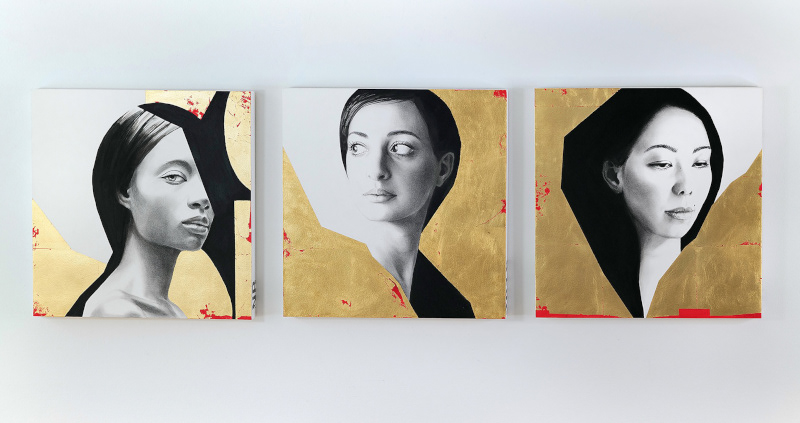
The paintings you create have both literal and symbolic meaning. I get the feeling that the words, shapes, paint strokes, and the gold leaf you add to your canvas work together to amplify each portrait. How do you achieve different layers and depth in your work?
I do love layers and juxtaposition of elements. The contrast of styles (abstract vs. representational) and contrast of materials (graphite vs gold leaf) help create the depth and interest.
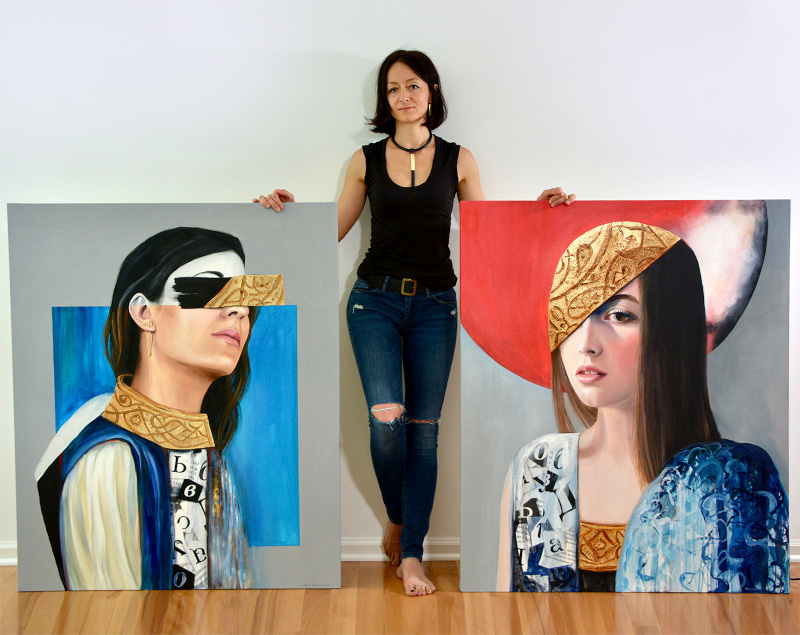
Many of your portraits feature women, often you can find a portrait within a portrait, as in your “Shielded Warriors” series. How do you explore modern ideals of femininity in your work? How do you like your viewers to perceive your art?
I want viewers to see beauty, mystery, and confidence in my paintings. The women I portray are self-actualized and independent, often in a peaceful state of reflection. They are kind, but also cunning, and know their value in the world.
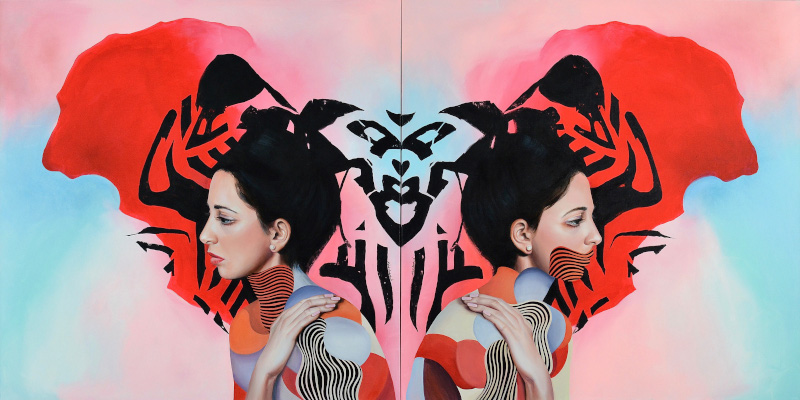

In your series “Reflections”, you sort of replicate an image, but with slight changes, inspired by different viewpoints. What was the idea behind this series? Do you plan an extension of the series in the future? Please go into detail with your answer.
Reflection series explores the idea of dualities and different personalities that we all have. It’s a portrayal of the same person that is simultaneously represented in two parts of their internal world. For example, my piece “reflection 2”, explores the idea of courageously speaking the truth versus silently maintaining diplomacy. I do love this concept and feel that it aligns with the human state psychologically, as well. And yes, I do plan on creating more works that elaborate on this idea.
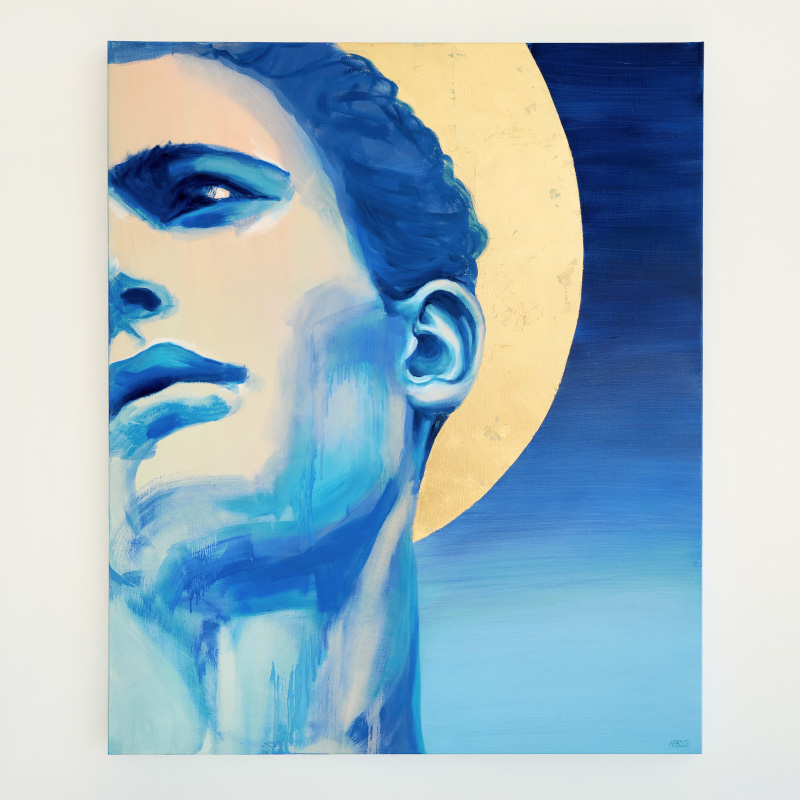
Your art has been exhibited in different fairs across the U.S., and is part of private collections in the USA, Europe, Middle East, and Russia. Does the war in Ukraine have an impact on the distribution and presence of your work in Europe?
The war is terrible, and it has a personal impact on me as I have friends that live in Ukraine. But as far as art distribution and presence, it didn’t have an impact.
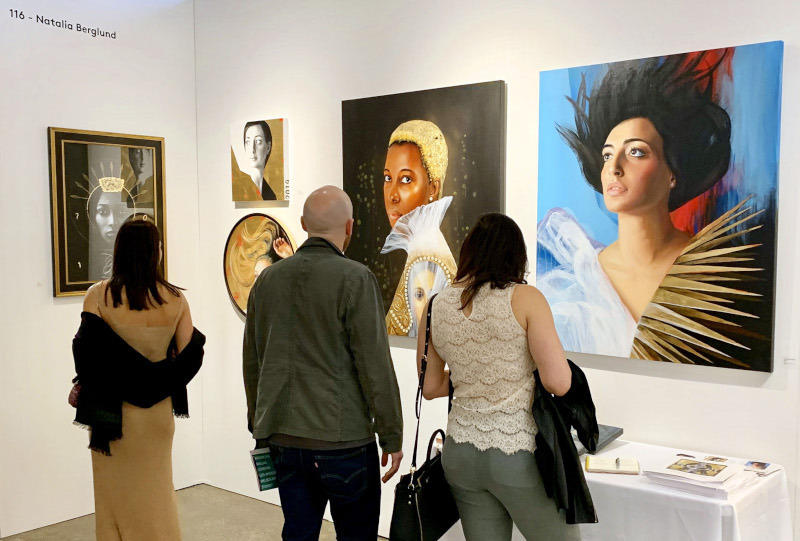
I discovered your art at The LA Art Show and The Other Art Fair in Los Angeles, CA. What do you enjoy most about public group exhibitions? Can you tell us about a favorite exhibit you’ve done in your career so far? Why was this exhibit meaningful to you?
My favorite and most meaningful show was my solo exhibition at the Museum of Russian Art in Minneapolis in 2018. This was my first solo exhibition and I really had to push myself creatively to get ready for it. I also received a lot of exposure and positive feedback. The Other Art Fair is also a great event, as it provides an opportunity to talk to art lovers and see how they respond and connect with your art.
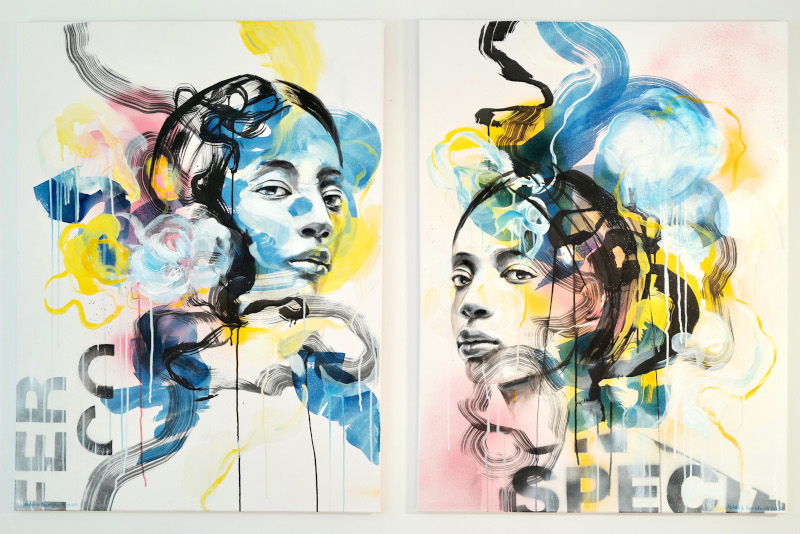
With the current political climate, and the many threats to minorities and cultural groups around the world, do you feel that art can be a catalyst of hope, and the artist an architect for change?
I think artists can create a lot of hope, as well as indirectly impact societal trends and policies with their works. Art can act as a symbolic rallying point that can motivate and unite individuals and entire societies to create change.
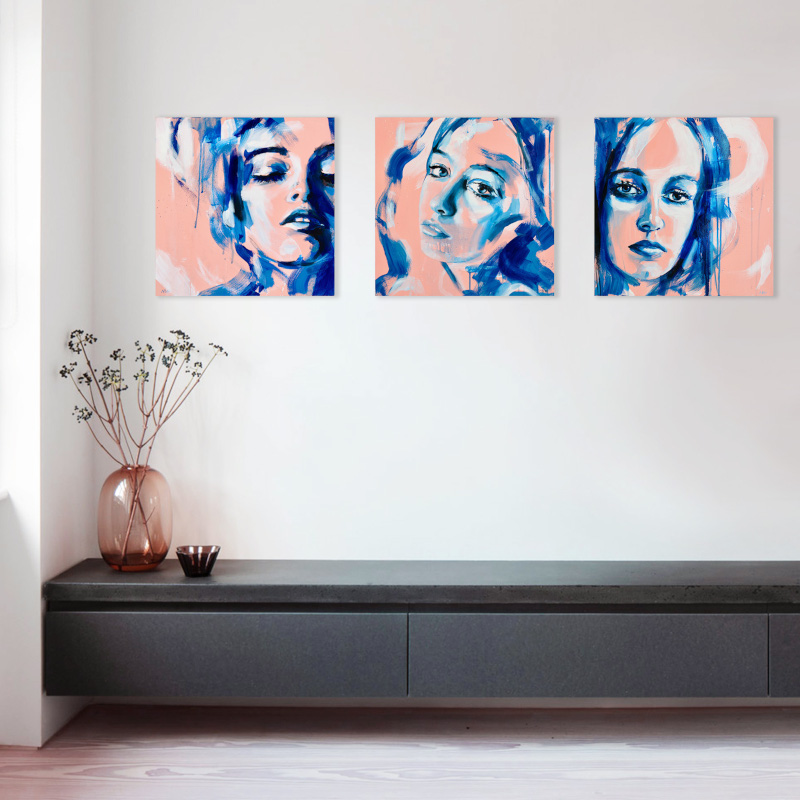
What are you currently working on and where can we see your art next?
I am currently pushing myself more into the abstract direction. I still want to portray people, but in a more abstract, looser style.
I will be participating in a group show in Minneapolis [from] January [to] February [2023], and later in the The Other Art Fair in Los Angeles.
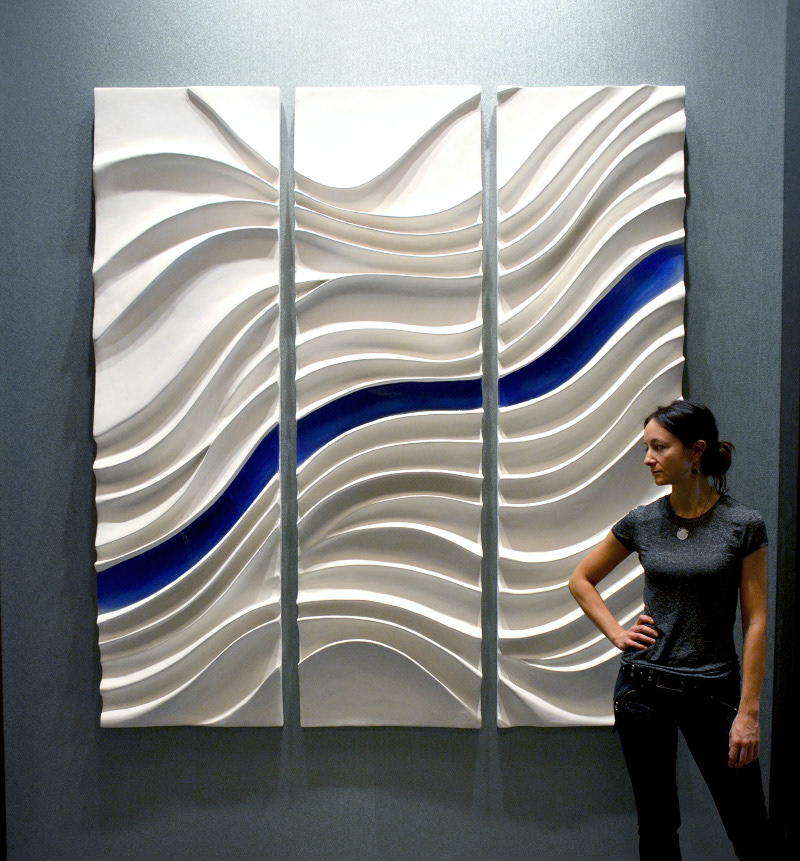
What is the legacy you would like to create for yourself and your art?
I would love for my art to provide deep meaning to people who seek it, and to live on and be cherished.
|
|

